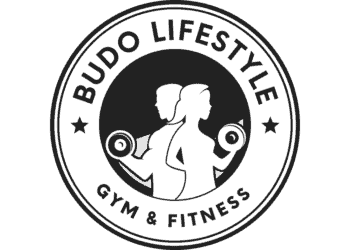LEARN HOW TO PROPERLY PERFORM SQUATS

The squat is an exercise that activates the whole body. The legs are heavily loaded, mainly the quadriceps, then the lower back, stomach, and other parts of the body. Depending on which variation of the squat will be practiced, it is possible that certain parts will be activated more.
There are several ways to properly perform the squat:
-without weights,
-with two and one-arm weights
-a weight placed in front (front squat)
-a weight placed behind the body (back squat)
-and there are many more variations such as hack squats, Jefferson squats, belt squats, etc.
There is also a division according to the depth of the descent: squats, semi-squats, parallel squats, and deep squats.
Squatting has many advantages because it is a multi-joint exercise (hip joints, knees, feet). That involves a larger number of muscle groups and improves intermuscular coordination.
When performing squats, one must pay attention to the correct technique. This means that the lower back must be toned. The chest should protrude slightly forward. The head should be straight and the gaze should be directed far straight. The whole foot should be on the ground, and we transfer the weight to the heel. If we exercise with weight, we can put our hands closer to the bar. This will force us to push our chest forward more, which will automatically tighten our back.
It is especially important that the knees do not cross the tips of the toes. The knees should be pointing outwards. The back should not be excessively bent forward. The spine and pelvis always behave as a long diagonal line in a neutral position.
Instead of looking up at the ceiling or too far down at the floor. Imagine that you have a tennis ball between your chin and chest, that cannot fall out. The head has a position as an extension of the neck. The gaze is directed far ahead, towards the floor.
Usually, the pace of performance should be moderate. More advanced practitioners can perform the squat in an explosive way, that is, in the eccentric part (negative phase). We go down more slowly, and in the concentric part (positive phase) we can go down quickly (explosively). In the last part, you can even add a toe lift.
Inhalation is done in the lower part (negative phase- eccentric), and exhalation in the last third of the lift, positive phase (concentric phase). Some heavy lifters hold their breath all the time or use the Valsalva method of breathing. In order to increase the pressure in the chest and abdominal cavity and thus strengthen muscle contraction. That it can handle a greater load. It’s the same with Olympic weightlifting.
According to some research, the use of lifting belts is justified only for extreme weights. It has a role similar to that of holding the breath, that is, increasing the pressure in the chest and abdominal cavity.
Depending on our goals, the depth of descent in the squat will also be determined (squats, semi-squats, parallel squats, deep squats). In deep squats, the muscles of the buttocks work more, but in the semi-squat, we can lift more weight.

Olympic weightlifters in the bottom position of a deep squat have a completely straight back and a straight pelvis. For most athletes who squat, this is not the case.
There are typical mistakes when performing squats that can lead to incorrect body position and thus inevitable injuries.
Typical mistakes when performing squats
The most common mistake is when we transfer the weight to the front part of the foot. The reason may be insufficient flexibility of the lower back.
Some exercisers also make the mistake of positioning their knees inward, which can also cause injury after a while. Due to such deviations in execution technique, the forces are not well directed. Injuries can occur, usually ligaments and tendons. It’s good while learning to squat with a stick or an empty bar. If doing auxiliary exercises, the stick can be placed between the hands and the lower back to straighten the spine.
Tall people have a particular problem. But there are ways to teach a beginner who makes these mistakes to do it right. One way is to place a lifter under the heels (no more than a few centimeters) and then bring the weight to the heels. The same case is the back bending. It is caused by insufficient back flexibility and leads to excessive forward bending.
The spine and pelvis should not be excessively elongated. Especially there should be no excessive extension of the cervical and lumbar vertebrae.
Squatting too deep is also a mistake in squat performance. Most exercisers try to squat as deep as possible because they believe that they will shape the muscles faster. At the same time, no attention is paid to the load on the knee joint. It’s enough to lower the hips to the height of the knee. It can even be above knee height.
The quick performance of squats not performed with the correct body position can cause physical injuries is also considered wrong. To master the technique, practice slowly. A slow pace is often more demanding than a fast pace because it trains muscular endurance.
